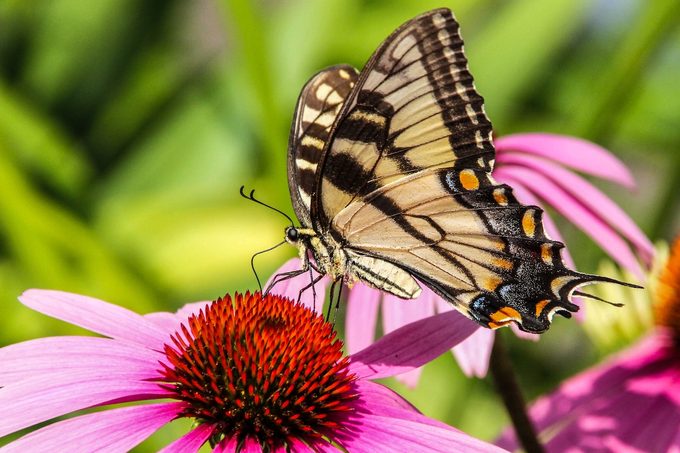Native Wildflowers That Support Butterflies and Pollinators
Native wildflowers play a crucial role in supporting local ecosystems, particularly for butterflies and pollinators. These plants not only add beauty to gardens but also provide essential resources for wildlife. By choosing the right native species, gardeners can create habitats that sustain a variety of insects throughout the seasons.
Purple Coneflower (Echinacea spp.)
Purple coneflowers are tall, resilient perennials that are often used as cut flowers. However, it’s important to leave some blooms for birds and pollinators. Deadheading these flowers regularly encourages more blooms, especially during the early summer months. For a natural look, consider planting native pale purple coneflowers as wildflowers to attract butterflies and other beneficial insects.
Wild Violet (Viola spp.)
Wild violets may be seen as weeds in lawns and gardens, but they serve an important ecological purpose. These small blossoms act as host plants for fritillary butterfly caterpillars. Allowing them to spread in a wildflower garden supports butterfly populations. Keep an eye out for small, spiky caterpillars that feed on the low leaves and purple blooms—these are harmless and indicate a healthy ecosystem.
Black-eyed Susan (Rudbeckia spp.)
Black-eyed Susans are part of the coneflower family and are among the most popular wildflowers. The common variety, Rudbeckia hirta, is well-known, but there are many other native species worth growing. These hardy plants are typically biennial, meaning they bloom in their second year after being sown from seed. Their vibrant yellow and orange flowers make them a favorite among pollinators.
Goldenrod (Solidago spp.)
Goldenrod is often mistakenly blamed for causing allergies, but it’s actually ragweed that is responsible for seasonal allergies. Goldenrod is a valuable plant for butterflies and other pollinators, especially in the fall. Its slender golden spikes provide nectar for late-season insects. Smaller varieties like Ohio goldenrod are ideal for compact gardens or container planting.
Sunflower (Helianthus spp.)
Sunflowers are one of the most recognizable wildflowers, with the common sunflower (Helianthus annuus) being native to the West and widely cultivated across the country. However, there are many other species within the sunflower family that are equally beautiful and useful. For example, the western sunflower (Helianthus occidentalis) thrives in containers or small plots, making it a great option for urban gardeners.
Milkweed (Asclepias spp.)
Milkweed is essential for monarch butterflies, as it serves as both a host plant and a source of nectar. While common milkweed (Asclepias syriaca) is widely available, there are many native varieties suitable for different regions. Gardeners in the West or Southeast should seek out local species to ensure the best results for their specific climate.
Aster (Symphyotrichum spp.)
Fringed aster flowers are a key resource for butterflies, helping to extend their active season into the fall. Some butterfly species overwinter in northern regions and rely on nectar sources until the first frost. Most asters prefer full sun, though some varieties can tolerate partial shade. Planting them in sunny areas ensures they thrive and support pollinators effectively.
Benefits of Growing Butterfly-Friendly Plants
By incorporating native wildflowers into your garden, you can create a welcoming environment for butterflies, bees, and other pollinators. These plants not only enhance biodiversity but also contribute to the health of local ecosystems. Whether you’re planting in a large garden or a small container, there are plenty of options to choose from.
In addition to supporting wildlife, many of these plants are easy to grow from seed, making them accessible for gardeners of all skill levels. With proper care and attention, they can flourish and provide beauty and sustenance for years to come.
For those interested in further enhancing their garden for butterflies, consider adding host plants like passionvine, which provides food for certain butterfly species. Exploring additional wildflowers such as the top 10 hummingbird-friendly plants can also help create a diverse and thriving habitat.







